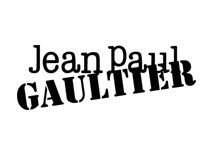Jean Paul Gaultier
In 1976 Jean-Paul Gaultier presented his first collection under his own name, at the "Palais de la Decouverte" comprising articles such as furnishings, table sets in plaited straw. In 1977 he star...
In 1976 Jean-Paul Gaultier presented his first collection under his own name, at the "Palais de la Decouverte" comprising articles such as furnishings, table sets in plaited straw. In 1977 he started his own firm, for couture. In 1978 his first collection with partner Kashiyama. He held twice-yearly collections of feminine wear, the most important of which. In 1981 Gaultier changed his partner and Kashiyama went back to Japan, where he still produces Gaultier products under licence for Japan and the Far East. Sales in Italy were handled by Gibo for woven goods and Equator for knitsIn 1988 Gaultier launched his jewellery line.Brand Details
Founder
Jean Paul Gaultier
Designer
Jean Paul Gaultier
from
1976to
PresentBrand Strategy
Market segment
Premium
Core business
Apparel
Targets
Men, Women, Kids




